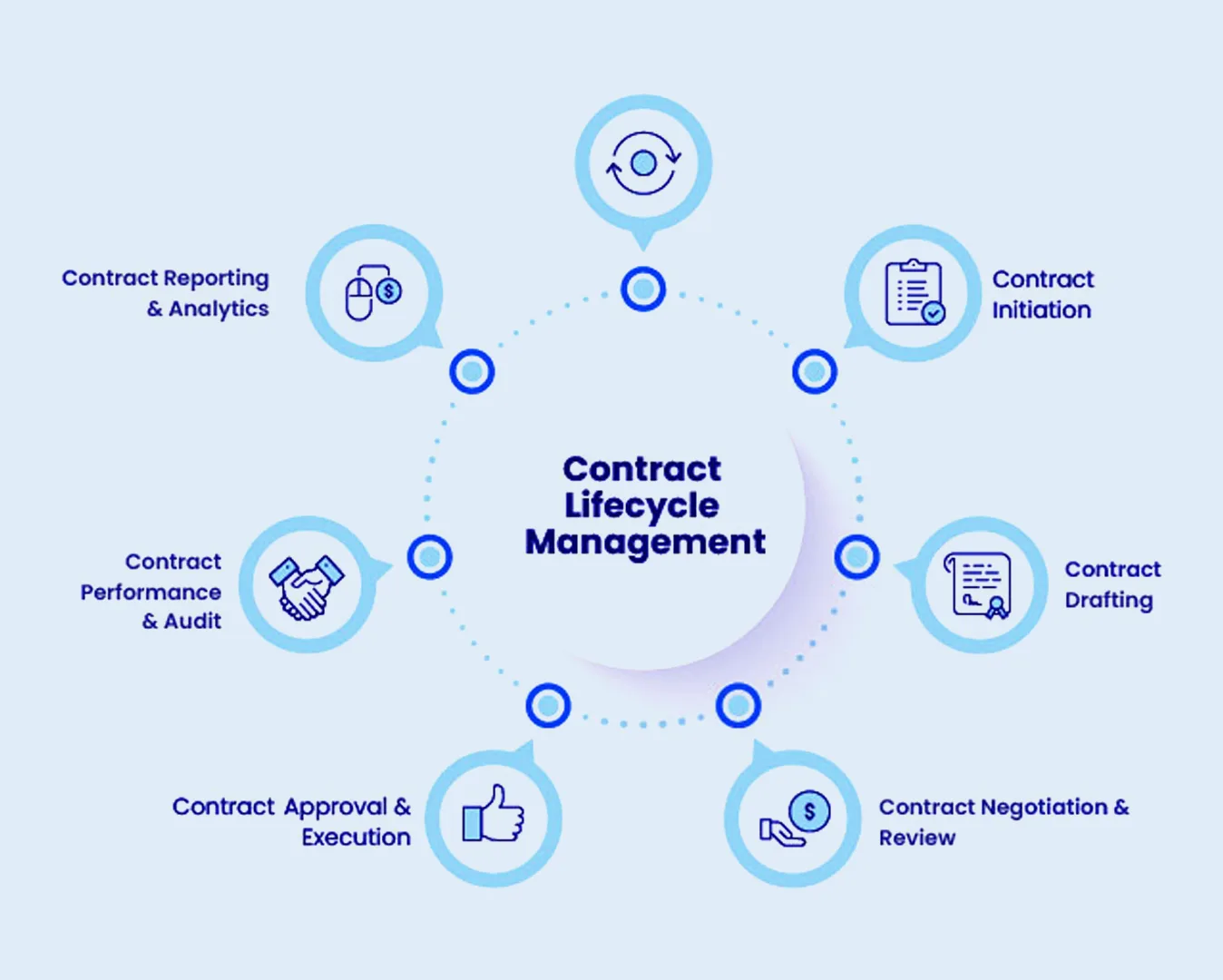
- Data Analytics for Contract Performance:
- Implement Predictive Analytics: Use contract data to implement predictive analytics models. These models can forecast contract performance, identify potential risks, and estimate future outcomes based on historical data. Predictive analytics can help enterprises proactively address issues, optimize contract terms, and improve negotiation strategies.
- Identify Trends and Patterns: Analyze contract data to identify trends and patterns that can inform business strategies. This may include understanding market trends, supplier performance, and customer behavior. By extracting insights from contract data, enterprises can make data-driven decisions that contribute to better business outcomes.
- Evaluate Financial Impact: Assess the financial impact of contracts by analyzing payment terms, pricing structures, and penalties. Understanding the financial implications of contracts enables enterprises to negotiate favorable terms, optimize cash flow, and identify opportunities for cost savings.
- Enhanced Visibility and Compliance:
- Real-time Monitoring: Utilize contract data to implement real-time monitoring of key contract milestones, obligations, and deadlines. Automated alerts and notifications can help ensure that contractual commitments are met, reducing the risk of non-compliance and associated penalties.
- Compliance Reporting: Leverage contract data to generate compliance reports. These reports can demonstrate adherence to regulatory requirements, industry standards, and internal policies. Compliance reporting is essential for audit purposes and helps mitigate legal and financial risks associated with non-compliance.
- Vendor and Supplier Performance: Analyze contract data to evaluate the performance of vendors and suppliers. Track key performance indicators (KPIs) outlined in contracts to ensure that partners are meeting their obligations. This analysis can inform decisions related to contract renewals, renegotiations, or the selection of new vendors.
- Strategic Decision-Making and Optimization:
- Portfolio Analysis: Conduct portfolio analysis using contract data to evaluate the overall performance and impact of contracts on the business. This analysis can guide strategic decision-making regarding portfolio optimization, resource allocation, and investment priorities.
- Scenario Planning: Use contract data to create scenarios and conduct scenario planning. This involves simulating different business situations and assessing the potential impact of various decisions. Scenario planning helps enterprises prepare for uncertainties, optimize strategies, and make informed decisions based on likely outcomes.
- Contract Portfolio Optimization: Optimize the overall contract portfolio based on performance analysis. Identify contracts that contribute the most value, assess the alignment of contracts with organizational goals, and strategically prioritize and allocate resources accordingly.
By leveraging contract data in these ways, enterprises can transform contracts from mere legal documents into valuable strategic assets. The insights gained from contract data analytics, improved visibility, and strategic decision-making can drive business value, enhance competitiveness, and contribute to overall organizational success.




